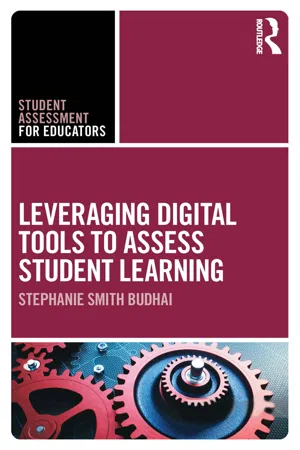Assessment in the 21st Century
Assessment and Evaluation are words that K-12 teachers are quite familiar with. Most everything and anything that teachers do with their students must be documented, written up, and data driven. While documenting student learning is important for many reasons, the pressure to always assess can be taxing on teachers. For students, it can take the excitement of learning away, make them anxious, and negatively impact the overall learning environment. Fortunately, assessment in the 21st century does not have to be stagnant, boring, and overwhelming for students and their teachers. Advances in learning technologies present a ubiquitous opportunity to embrace and transform assessment practices. Learning objectives are still what drives instruction, but digital tools can serve as a catalyst in helping students demonstrate their knowledge.
According to the Glossary of Education Reform (2015), assessment is described as “the wide variety of methods or tools that educators use to evaluate, measure, and document the academic readiness, learning progress, skill acquisition, or educational needs of students” (para. 1). Assessment in the 21st century has many of the tenets that were started towards the end of the 20th century. In the 1990s, the principles of Universal Design for Learning were presented by Anne Meyer and David Rose (CAST, 2018). These principles coupled evidenced-based educational practices with brain sciences to develop a comprehensive framework that educators could use to remove barriers that may be in place to restrict students from learning. Assessment practices in the 21st century use similar guidelines in developing different ways, for individual learners, to demonstrate their knowledge.
Assessment of learning can have dual purposes. Where once educators were mostly concerned with whether students have mastered one academic concept in math or science, for example, we now are looking at other soft skill areas that students may need in future careers that may not even exist at this time. The 4Cs of Critical Thinking, Communication, Collaboration, and Creativity is one area of skills that students will need to be fluent in across multiple working environments (Budhai & Taddei, 2015). Students must be able to think deeply about course content, engage in inquiry, and make authentic meaning of concepts. As students gain new knowledge, they must be able to express their learning through written and oral communication. Teaming and peer connections are critical in the 21st century and collaboration between teachers and teachers, students and students, and teachers and students are at the crux of all academic spaces. In any learning environment, students need space to be creative, flexible, and open. Innovation and invention encouraged by teachers can bring forth the demonstration of learning in new and creative ways. In fact, students are expected not only to work creatively with each other, but use creative thinking and processes to explore and invent (National Education Association, 2014).
The ways in which students learn are changing and how we assess them must make similar adaptations and modifications. Paper and pencil as the sole mechanism for carrying out assessments have gradually been replaced by leveraging digital tools to align assessment practices with the innovation and creative spirit of 21st-century teaching and learning. Through this book, I will share ways in which digital technology tools can assist you in gathering assessments, while providing students with diverse opportunities to demonstrate what they have learned.
Before getting into some of the technology tools used for assessment in greater detail, this chapter sets the stage by discussing assessment standards alignment, exploring the different types of assessments, identifying the potential of digital tools to transform assessment practices and considering how technology can level the playing field for linguistically and neurodiverse students. The focus is on showing you why greater use of technology in assessment is needed to more effectively enhance student learning and motivation.
Preparing Students for Academic Growth
All things considered, assessment is simply the tracking of academic growth, or at least it should be thought of this way. As we teach students, we are essentially preparing students for expanding their knowledge and understanding of content and concepts. Teachers need to provide students with a nurturing and supportive academic space, where the environment is built on the goal of academic growth and development for students and not grades. We need to celebrate progress and not perfect scores, while preparing students for success and use formative assessments to make instructional changes. If students feel prepared to take assessments, they will be confident and likely make more progress than if they are nervous, unprepared, and worried about their grades. Progress is the goal, not points, not scores, not grades. Technology and digital tools can be leveraged to help students grow and develop academically. Students can enjoy preparing for learning and assessments can be an engaging and exciting experience for students.
Assessment Standards Alignment
There is a symbiotic relationship between the learning that takes place in an academic setting and the ways in which teachers gather the extent to said learning. Kulasegaram and Rangachari (2018) capture the essence of this:
